The Allure of Australian Zircon: Unearthing a Gemstone of Timeless Beauty in Modern Jewellery
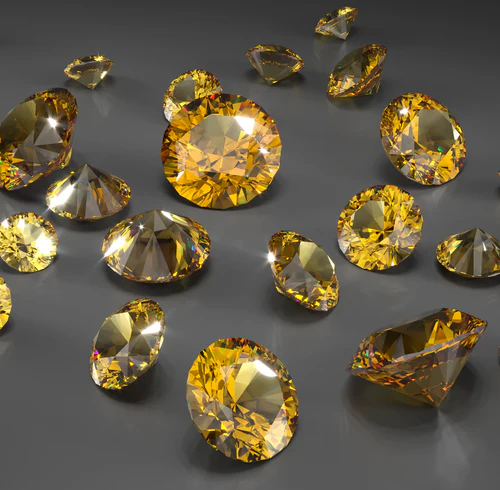
Rediscovering Zircon’s Ancient Sparkle
In the vast and ancient land of Australia, a gemstone of remarkable history and breathtaking beauty often goes unnoticed by the casual observer. While diamonds, sapphires, and opals frequently steal the spotlight, the Australian zircon, with its fiery brilliance and diverse palette of colours, quietly offers a unique allure. Far from being a mere diamond simulant (a common misconception fueled by the synthetic cubic zirconia), natural zircon is one of the oldest minerals on Earth, holding geological secrets within its crystalline structure that predate much of life on our planet.
This article delves into the captivating world of Australian zircon, profiling its distinct characteristics, historical significance, and the reasons behind its often-overlooked status. More importantly, we will explore how this exquisite gemstone is finding its rightful place in modern jewellery design, enchanting connoisseurs and contemporary wearers alike with its timeless elegance and vibrant charm.
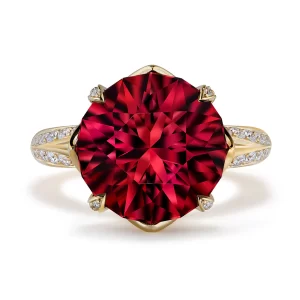
What is Zircon? A Gemological Perspective
Before we celebrate the Australian variety, let’s understand what natural zircon truly is. Zircon is a zirconium silicate mineral (ZrSiO4) belonging to the nesosilicates group. Its name is thought to derive from the Persian word “zargun,” meaning “gold-coloured,” a nod to some of its warm hues.
Key Characteristics:
- Hardness: With a Mohs hardness of 6.5 to 7.5, zircon is durable enough for most jewellery applications, though care should be taken to protect it from sharp blows.
- Brilliance and Dispersion: Zircon boasts an exceptionally high refractive index (RI) and dispersion, giving it a dazzling brilliance and fire that rivals, and in some cases even surpasses, that of diamond. Dispersion is the ability of a gem to split white light into its spectral colours, creating a rainbow effect often called “fire.”
- Specific Gravity: Its relatively high specific gravity makes it feel heavier than other gems of similar size.
- Pleochroism: Some zircons exhibit pleochroism, meaning they can display different colours when viewed from various angles.
- Double Refraction: Zircon is doubly refractive, which can sometimes cause a “fuzzy” appearance of facet edges when viewed under magnification, a distinguishing characteristic.
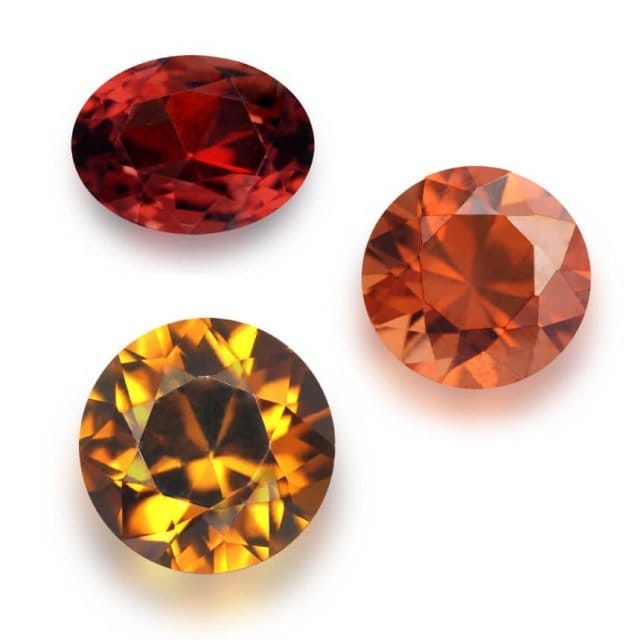
A Spectrum of Colours: Beyond the “White” Misconception
One of zircon’s most enchanting features is its incredible range of colours. While colourless zircon is often heat-treated to produce the popular blue variety, natural zircon comes in a kaleidoscope of shades:
- Blue: The most commercially popular colour, often produced by heating brownish zircon. Its vibrant teal to sky blue tones are highly sought after.
- Earth Tones: Rich browns, oranges, reds, and yellows are common natural colours, evoking the warmth of the Australian landscape.
- Green: Rare and highly prized, natural green zircon often gets its colour from trace elements and sometimes exhibits slight radioactivity (though safe for wear).
- Pink/Purple: Delicate and romantic, these hues are less common but truly beautiful.
- Colourless: Often used as a diamond substitute in historical contexts due to its intense brilliance, but valued in its own right today.
It’s crucial to distinguish natural zircon from cubic zirconia (CZ), a synthetic diamond simulant. CZ is man-made, inexpensive, and has no geological connection to natural zircon. The confusion between the two has unfortunately overshadowed the natural gem’s unique merits for decades.
Australian Zircon: A Journey Through Time
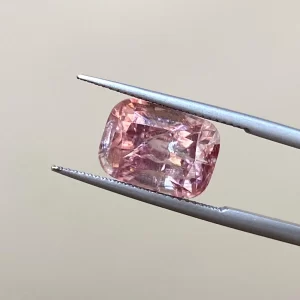
Australia is a globally significant source of zircon, particularly for its ancient origins. While much of the zircon mined commercially is used in industrial applications (ceramics, refractories, foundry sand), gem-quality Australian zircon holds a special place in the geological record and the jewellery world.
Ancient Origins:
Some of the oldest mineral grains ever discovered on Earth are zircons from the Jack Hills in Western Australia, dating back an astonishing 4.4 billion years. These microscopic zircons offer scientists invaluable clues about the early formation of our planet. While these are not gem-quality, they underscore zircon’s deep roots in Australian geology.
Key Australian Localities for Gem Zircon:
Gem-quality zircon has been found in various locations across Australia, often as alluvial deposits.
- Queensland: Areas like the Anakie gemfields, famous for sapphires, also yield beautiful zircons in various colours, particularly earthy reds, oranges, and browns.
- New South Wales: Deposits in New England and other regions have produced gem-quality material.
- Victoria: Some alluvial finds in gold mining areas have also yielded zircons.
The zircon from these Australian localities often exhibits strong, natural colours, contributing to its growing appeal. Unlike some other gem sources, Australian zircon often comes with the added prestige of being mined in an environmentally conscious and ethically regulated country.
The Overlooked Gemstone: Why Zircon Remained in the Shadows
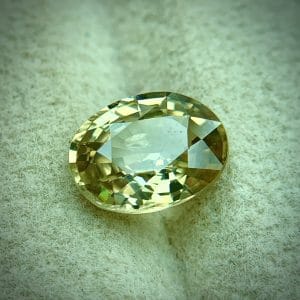
For many years, natural zircon remained an “underdog” in the gem world. Several factors contributed to its overlooked status:
- Confusion with Cubic Zirconia (CZ): This is undoubtedly the biggest hurdle. The phonetic similarity has led many to believe natural zircon is a cheap, synthetic imitation rather than a distinct, natural gemstone with its own unique properties and value.
- Heat Treatment Misconceptions: While heat treatment is common and accepted for many gemstones (like sapphire and ruby) to enhance colour, the significant transformation of brown zircon into vibrant blue zircon sometimes led to a perception that it wasn’t “natural” enough. However, this is a stable and widely accepted enhancement.
- Historical Perception as a Diamond Simulant: In bygone eras, colourless zircon was indeed used to imitate diamonds. This association, while showcasing its brilliance, inadvertently positioned it as a stand-in rather than a star in its own right.
- Lack of Aggressive Marketing: Unlike heavily marketed gems, zircon has not benefited from large-scale promotional campaigns, leaving its discovery to gem enthusiasts and independent jewellers.
The Resurgence: Australian Zircon in Modern Jewellery
Thankfully, the tide is turning. As consumers increasingly seek unique, natural, and ethically sourced gemstones, Australian zircon is experiencing a well-deserved resurgence. Its vibrant colours, exceptional fire, and ancient lineage make it a compelling choice for contemporary jewellery designers and wearers alike.
1. Embracing Natural Colours
Modern designers are moving beyond the blue and colourless varieties to celebrate zircon’s full spectrum.
- Earthy Tones: The rich browns, oranges, and reds of natural Australian zircon are perfectly suited for bohemian, vintage-inspired, and organic designs. They pair beautifully with rose gold or antique-finished silver, evoking a sense of warmth and natural elegance.
- Unique Greens and Pinks: These rarer hues offer a distinctive alternative for those seeking something truly unusual and captivating. A natural green Australian zircon can be the stunning centrepiece of a bespoke ring or pendant.
2. High Fire and Brilliance for Statement Pieces
Zircon’s impressive fire and brilliance make it an excellent choice for pieces where sparkle is paramount.
- Engagement Rings: For couples seeking an alternative to traditional diamonds, a well-cut colourless or blue Australian zircon can offer comparable sparkle at a fraction of the cost, with the added charm of being a natural, ancient stone.
- Cocktail Rings: The larger sizes available in zircon, combined with its fire, make it ideal for eye-catching cocktail rings that demand attention.
- Pendants and Earrings: A well-faceted zircon pendant can catch the light beautifully, drawing the eye with every movement.
3. Versatility in Design
Zircon’s hardness and availability in various shapes and sizes lend it remarkable versatility for designers.
- Art Deco Revival: Its geometric facet patterns and brilliant sparkle make zircon a perfect fit for Art Deco-inspired designs, especially in blue or colourless varieties.
- Nature-Inspired Designs: Paired with organic textures and motifs, the earthy tones of Australian zircon can beautifully complement designs inspired by flora and fauna.
- Minimalist Settings: Its inherent beauty allows zircon to shine even in simple, elegant settings, where its colour and fire are the main focus.
4. Ethical Sourcing Appeal
For the environmentally and socially conscious consumer, Australian zircon offers significant advantages. Australia has stringent mining regulations and high labour standards, providing assurance of ethical sourcing. This resonates deeply with a growing demographic of jewellery buyers who prioritize transparency and responsible practices.
5. A Story to Tell
Every Australian zircon carries billions of years of geological history within it. For many, wearing a piece of the Earth’s ancient past is a profound and personal statement. This narrative adds immense value beyond mere aesthetics, making zircon not just a gem, but a conversation starter.
Caring for Your Australian Zircon Jewellery
While durable, zircon requires some care to maintain its brilliance:
- Protection from Hard Blows: Due to its brittle nature, zircon can chip if struck sharply. It’s advisable to remove zircon jewellery during activities that might expose it to impact.
- Avoid Ultrasonic Cleaners: Ultrasonic cleaners can potentially damage zircon, especially if it has inclusions or fractures.
- Gentle Cleaning: The best way to clean zircon jewellery is with mild soap and warm water, using a soft brush. Rinse thoroughly and dry with a lint-free cloth.
- Storage: Store zircon jewellery separately from harder gemstones (like diamonds or sapphires) to prevent scratching.
Where to Find Australian Zircon Jewellery
As its popularity grows, Australian zircon can be found through:
- Independent Jewellery Designers: Many artisanal jewellers are recognizing zircon’s appeal and incorporating it into their unique creations, often sourcing directly from Australian gem dealers.
- Specialized Gemstone Dealers: Reputable gem dealers, particularly those focusing on Australian gemstones, will offer a selection of loose Australian zircons for custom designs.
- Bespoke Jewellers: If you have a specific vision, a bespoke jeweller can help source the perfect Australian zircon and create a one-of-a-kind piece.
When purchasing, always ensure the seller clearly distinguishes natural zircon from cubic zirconia and provides information about the gemstone’s origin and any treatments (like heat treatment for blue zircon).
Conclusion: Australian Zircon – A Star Reborn
The allure of Australian zircon lies not just in its dazzling brilliance and rich spectrum of colours, but also in its profound connection to the Earth’s ancient past and its compelling journey from an overlooked gem to a celebrated star. For those seeking a gemstone that offers exceptional sparkle, natural beauty, a diverse colour palette, and a story deeply rooted in Australian heritage, zircon presents an irresistible choice.
As modern jewellery continues to evolve, embracing individuality and ethical considerations, Australian zircon stands poised to captivate a new generation of admirers. It is a testament to the fact that true beauty often lies in unexpected places, waiting to be rediscovered and cherished for its timeless sparkle and unique narrative. So, the next time you encounter this magnificent gem, take a moment to appreciate the fiery dance within its facets – a dance that has been billions of years in the making.
Australian Zircon FAQ for SEO
1. Q: Is natural zircon the same as cubic zirconia? A: Natural zircon is an ancient, naturally occurring mineral (zirconium silicate) and one of the oldest minerals on Earth. Cubic zirconia (CZ) is a modern, synthetic, man-made material used as a cheap diamond simulant. They are entirely different, and the confusion between the two has unfairly overshadowed natural zircon’s unique merits.
2. Q: What makes Australian zircon an ethical choice for jewellery? A: Australian zircon is considered a strong ethical choice due to Australia’s stringent mining regulations and high labour standards. These practices provide consumers with greater assurance of responsible and transparent sourcing, aligning with the demand for ethically produced gemstones.
3. Q: Is zircon a durable gemstone for everyday wear? A: Zircon has a Mohs hardness of 6.5 to 7.5, making it durable enough for most daily jewellery applications, such as rings and pendants. However, due to its somewhat brittle nature, it is advisable to protect zircon jewellery from sharp blows or impact to prevent chipping.
4. Q: Why does zircon have so much brilliance and fire? A: Zircon boasts an exceptionally high refractive index (RI) and dispersion, which are key optical properties. High dispersion is the ability to split white light into spectral colours (the rainbow effect or ‘fire’), and high RI allows it to reflect a lot of light, giving it a dazzling brilliance that rivals diamond.
5. Q: Where does the blue colour in zircon come from? A: While some blue zircon occurs naturally, the vibrant blue variety that is most commercially popular is typically produced by heating natural brownish zircon. This is a stable, widely accepted, and common enhancement in the gemstone industry.
6. Q: How old are the oldest zircon minerals found in Australia? A: The oldest mineral grains ever discovered on Earth are microscopic zircons from the Jack Hills in Western Australia, dating back an astonishing 4.4 billion years. While these are not gem-quality, they highlight zircon’s profound and ancient geological roots in Australia.
7. Q: What colours are commonly found in Australian zircon? A: Australian zircon is famous for its strong, natural colours, which often include rich earth tones like browns, oranges, reds, and yellows. Other available colours include blue (often heated), rare greens, pinks, purples, and colourless varieties.
8. Q: Why was natural zircon overlooked in the past? A: Zircon was largely overlooked primarily due to the widespread confusion with synthetic cubic zirconia (CZ). Additionally, its historical use as a diamond substitute and a lack of aggressive marketing campaigns contributed to its status as an “underdog” in the gem world.
9. Q: Can I use an ultrasonic cleaner on my zircon jewellery? A: It is strongly recommended to avoid using ultrasonic cleaners on zircon jewellery. Ultrasonic vibrations can potentially damage the gem, especially if it has internal inclusions or fractures. The best method is gentle cleaning with mild soap, warm water, and a soft brush.
10. Q: Is zircon a good diamond alternative for engagement rings? A: Yes, zircon is an excellent and popular natural alternative to diamond for engagement rings. A well-cut, colourless or blue Australian zircon offers comparable or superior sparkle and fire at a fraction of the cost, while also providing the charm of being an ancient, natural stone.
